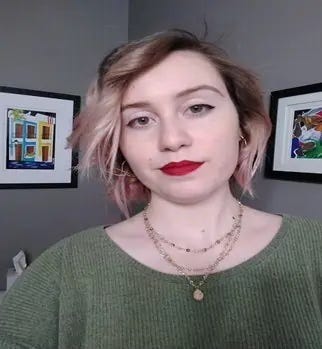“You gonna murder someone else? You can’t kill us all, Nazis.”
Renee Good is dead, and she shouldn’t be. Her death, at the hands of ICE agents, was completely unnecessary. She was shot in her own car and denied the medical assistance of a man at the scene who identified himself to agents as a physician. He was turned away. If agents thought they had reason to stop Good, or even arrest her, they had plenty of options. They could have gotten her car tag. They didn’t have to kill her.
But this administration excuses, condones, and even encourages this sort of aggression. This is what Donald Trump and Kristi Noem seem to want. Instead of ensuring federal agents operate within constitutional boundaries, they seem to revel in abuses. Before today, ICE’s rampage across the country had drifted off of the front pages of newspapers and the top of the hour on TV news. But ICE was still busy implementing Trump’s “mass deportation” policy, even as we were distracted from it by the Epstein Files and Venezuela. It’s been a constant since he returned to office.
DHS was created in 2002 as part of a major government reorganization after 9/11. ICE followed in March 2003. Congress gave the new agency a range of civil and criminal authorities and a mission of protecting national security and public safety.
During the first Trump administration, and even more over the last 12 months, the agency’s personnel and its mission have morphed in an accelerated, alarming fashion. There have been too many incidents involving disregard for people’s rights and well-being for it to be coincidence.
For the past months, I’ve been paying attention to those incidents. I realized early on that there were far too many to capture them all. But focusing on just a few is illustrative of the persistent pattern of abuses and how little concern this administration has about them. I’ve been collecting stories for months, so I could write about them, and finally got to work on that column last weekend. In my notes, I wrote that my plan was to publish the “column at some point, on a news day with a little space in it. But that day never came, and this is too important to wait any longer.” After events today in Minneapolis, that seems woefully inadequate.
I wrote this as I continued to work on the column this morning before the news of Renee Good’s death:
“Those issues have dropped out of the 24-hour news cycle for the moment, but courts are still considering them. And ICE is still—we need to avoid any understatement in this regard—trampling on the rights of American citizens and migrants alike, behaving in ways that in any other administration would’ve resulted in firing and criminal prosecution. Now, it appears to be the desired result. With so much happening all at once, it is very difficult to keep hold of any one particular point. But even as we focus on the National Guard and Trump’s desire to militarize American streets, ICE’s lawless behavior in repeated incidents should be deeply concerning to everyone who wants to live in a free country.”
As part of its campaign against Minnesota Governor and former Democratic Vice Presidential candidate Tim Walz, the Trump administration has been inundating Minnesota with federal officials and federal agents. This was DHS’s offering this morning:
Then, the video and eyewitness testimony to the shooting emerged on social media. Minnesota Senator Tina Smith tweeted: “A US citizen has apparently been shot by ICE agents in Minneapolis. I’m gathering information, but the situation on the ground is volatile.” Reports that she had died followed quickly.
It’s only possible for incidents like this to happen with leadership that creates a permissive environment for it. Every unpunished incident creates the prospect that something worse will happen. That’s how we ended up here.
It’s important to obtain all of the available photos and video footage, including law enforcement body cameras, following an incident like this and to talk with eyewitnesses. Agents can only use deadly force when they reasonably believe their lives or the lives of others are threatened if they don’t act. Sometimes, different perspectives show different things, but the video we’ve seen so far appears to show an agent who had other options, but chose to fire on an innocent woman instead.
When you listen to this video, shot moments afterward, you can clearly hear a bystander screaming, “You gonna murder someone else? You can’t kill us all, Nazis.”
There is every reason for Americans to be out on our streets protesting against ICE’s actions. The federal judiciary has repeatedly condemned the administration's detention policies, with 309 out of the 323 judges that cases have been brought before ruling against ICE. Mostly recently, a federal judge in New Hampshire ordered the release of an immigrant being held unlawfully in custody.
DHS continues to amp up ICE’s presence in cities across the country. Minnesota has become, for the obvious reason, a special focus. On Tuesday, DHS tweeted: “The largest DHS operation ever is happening right now in Minnesota. @POTUS Trump and @Sec_Noem have rallied DHS law enforcement personnel to keep Americans safe and ERADICATE fraud. We’re not leaving until the problem is solved.” The post was accompanied by video of a man being easily taken into custody. But ICE’s operations in Minnesota have not been picture perfect, even before today.
There was an incident Christmas week where ICE detained a U.S. citizen, demanding that he prove his citizenship. Video of the incident shows he knows his rights and calmly tells the agents, “I’m a United States citizen.” The response is, “You have to prove that to us.” It’s only after an agent notices they’re being filmed that they let the man go. We’ve skipped over putting yellow stars on people and gone straight to deportation for anyone unlucky enough to be arrested anonymously and disappeared without due process—let’s underscore what that means: even if you’re a U.S. citizen, you’re at risk.
The stories that become public are bad. In September, a journalist, Steve Held was taken into custody while reporting on an ICE protest in Broadview, Illinois. He was detained and released without being processed, what prosecutors sometimes refer to sarcastically as “unarrested,” as in it was a mistake to take him in the first place.
In early October, federal agents with Border Patrol, the FBI, and ATF arrested 37 people in a raid on a Chicago apartment building. They banged on residents’ doors during the night according to the Chicago Sun Times, “pulling men, women and children from their apartments, some of them naked, residents and witnesses said.” A witness saw “agents dragging residents, including kids, out of the building without any clothes on and into U-Haul vans,” and said that “kids were separated from their mothers.” DHS claimed the neighborhood was “frequented” by Tren de Aragua gang members, but never offered any proof.
In three separate incidents, agents sprayed Christian ministers, in clerical collars, with pepper balls while they were peacefully protesting ICE. The Rev. Jorge Bautista was “struck in the face with a pepper round” fired by a federal agent in Oakland, California in October. That same month, the Rev. David Black was hit with a pepper shot outside of an ICE facility in the Chicago area. And in Rogers Park, Chicago, the Rev. Hannah Kardon, a United Methodist pastor, said she’d been shot multiple times with pepper bullets, “including while she was praying with her eyes closed and hands lifted, wearing a clerical collar.”
There are undoubtedly other stories out there too, the ones we don’t hear about. The ones where a kind neighbor didn’t stop to take video, where people didn’t pay attention. Standing together matters more than ever right now. It’s a moment for people of good conscience to stick together.
In Louisiana, David Courvelle, a detention officer, was fired and prosecuted for sexually abusing a woman in custody and under his authority in an ICE facility. He had sex with the Nicaraguan detainee for months until he was seen leaving a janitorial closet. It’s a federal felony for a person with authority over someone in custody to have sex with them, because of the inherently coercive nature of the situation; too much for even this administration to ignore.
The conditions ICE keeps detainees in are notoriously inhumane. A Judge appointed by Donald Trump in 2019 lambasted ICE in a case where a man was detained in a New York facility, in a poorly heated 6x6 feet cell designed for a single person, for more than two days. He was forced to sleep “near an open toilet with eight others, as the temperature outside dropped to 21 degrees. The lights were kept on at all hours.” The Judge wrote that “After nearly 35 years of experience with federal law enforcement in this judicial district, encompassing service as a prosecutor and a judge, I have never encountered anything like this,” and that ICE gave him false information about the arrest and refused to bring him to court as ordered and provide photographic evidence of conditions in the cell. The Judge suggested, as other judges have, that the agency might be held in contempt.
Whether it’s conditions in detention or the way ICE agents parade on American streets, shooting and killing instead of protecting and serving, it happens because of the people at the top. It’s those “leaders” who are responsible for ICE’s excesses, as responsible as the agent who fired his gun today.
It’s difficult to prosecute federal law enforcement agents in state courts, because DOJ can remove those cases to federal court. A Justice Department intent on giving agents a pass would be able to kill the cases once that happened. But that doesn’t mean state prosecutors shouldn’t try, even crafting arguments for keeping the cases in state court if the federal government refuses to operate in good faith. It wouldn’t be a certain path forward, but the moment calls for it. The statute of limitations for murder and other civil rights violations will likely extend beyond this administration’s time in office, making future prosecutions a possibility, but ICE needs a course correction now.
In 2022, the Supreme Court made it virtually impossible to sue ICE or other federal agents civilly for violating people’s constitutional rights. That case, Egbert v. Boule, holds that Congress must clearly establish a person’s right to sue, and they have not. In light of today’s shooting and other incidents, it’s time for Congress to act, although that will likely require midterm victories and Democratic majorities in Congress. Right now, with the administration condoning misconduct and no risk of personal accountability, agents are free to continue acting unlawfully. The risk that they might be held personally liable and forced to pay significant monetary judgments with their own funds could be the best ways to force them to stop and think.
But none of that will help Renee Good. The warning signs were all there, but this administration doesn’t care. Ask the people around you who support Donald Trump if this is what they voted for.
We’re in this together,
Joyce



